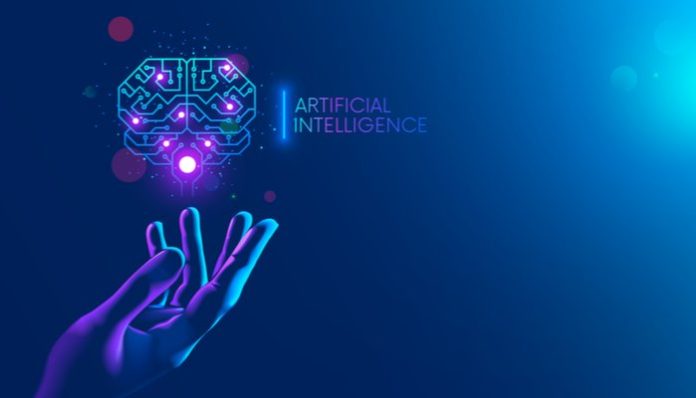The term Artificial Intelligence for IT Operations (AIOps) combines big data and machine learning to automate IT operations processes, including event correlation, anomaly detection, and causality determination
AIOps is the proactive answer to many lingering issues in application development environments. It approaches IT infrastructure and systems through real-time monitoring and addresses issues before they spread across the system. This is possible mostly because an AIOps platform ingests all the data from across all the systems in the application landscape, applies AI principles to analyze it, and creates opportunities to proactively identify and improve, optimize, or correct these areas.
AIOps toolsets make the operations teams more agile and enable them with the know-how to prevent issues. It is not a replacement for tools like Puppet or a new way of containerization, but rather a new AI tool that provides insight into available systems data and continuously monitors it. AIOps allows for self-monitoring of operations and alerts administrators to issues in real-time reducing the time and effort to fix issues and disruption to the business.
AIOps tools also use machine learning techniques to help system administrators identify what they routinely monitor, solve problems faster, and allow greater collaboration to minimize the impact on the business. It reduces the friction between developers and operations by enabling developers to solve operations problems on their own. , Developers will get the insights that rely on through machine learning techniques, thus avoiding dependency on Ops to share data and insights.
AIOps here to stay
AIOps is not just another industry buzzword, its time has arrived because of the proliferation of technologies and growth of AI. Old approaches to event management are simply not suited to the infrastructure that the organizations are adopting today, let alone to the release cycles that developers want to push from a code and infrastructure point of view. Until now there hasn’t been a solution for the highly dynamic IT infrastructure models that are quickly becoming the new normal.
One of the most important changes AIOps enables is the improvement of IT and Operations effectiveness due to its ability to ingest and monitor vast amounts of data. AIOps correlates data across users, applications, cloud-native architecture, hybrid infrastructures, and network services and applies machine learning, advanced analytics, and automation to deliver a new level of visibility and data-driven insights. This helps an operations team respond appropriately and take preventive measures. It turns data into action and provides comprehensive insights across the digital delivery chain, driving continuous improvement to speed service delivery, increase IT efficiency and accelerate innovation through the adoption of ML algorithms.
Challenges in implementing AIOps for IT operations
More and more companies are trying to sort through the myriad of options they have in developing a comprehensive approach to cloud services and containerization. Faced with as many as 8 Cloud Service Providers addressing various infrastructure needs and containerization technologies, CTOs/ CIOs are unsure how to proceed. They understand the benefits of modern infrastructure choices but choosing among the many options can stall the decision-making process. This is a frustrating time for IT staff that have the will to adopt but may lack the knowledge or skill.
While many enterprises maintain their on-premise infrastructure, they also want to reap the benefits and flexibility of modern cloud computing technology. This results in a hybrid-cloud environment, one that combines the on-premise infrastructure with private and public cloud architecture and enables increased efficiency.
AIOps is particularly well suited for the decentralized nature of the hybrid IT infrastructure but many organizations struggle to integrate a hybrid infrastructure. The fear of failure and diving into unknown territory is holding back most organizations, and this is slowing them down or causing a hard stop to moving forward. CXOs should view this not as a roadblock but rather as an opportunity to create a modernized cloud-based infrastructure powered and monitored by AIOps.
Given the benefits in terms of flexibility, cost structure, and agility moving to Cloud is inevitable however, many are still dependent on their legacy systems. Any transition away from legacy systems needs to be handled in small bite-sized pieces to mitigate the risk to the business and its customers.
There are typically five areas of concern for IT Operations :
The Higher Cost of Downtime
According to Gartner’s recent study, the average cost of IT downtime costs a company $5,600 per minute. Because there are so many differences in how businesses operate, downtime costs vary greatly but can reach as high as $300,000 per hour. Given the large expense associated with downtime, there is a strong business case for reducing them. The complexity of how organizations operate has a large influence on the cost per hour of downtime.
Too many cooks (teams) in the problem-solving kitchen
Figuring out what caused a problem is complicated, but it gets compounded when multiple teams are trying to resolve the same issues. Every DevOps team has its own part to play in controlling and maintaining the total tech stack. But when problems occur, this often makes it difficult to determine where they originated and once identified how to remedy the situation. Hence comes the need for having an automated approach to anomaly detection.
Adaptation to the changing new way of working
Newer agile methodologies and processes, such as DevOps, continuous deployments, containerization, microservices, and private/public/hybrid cloud computing keep evolving and changing. They are coming at a greater frequency, are more granular, and introduce a more complex environment. As application updates and changes in the IT landscape grow exponentially, adapting becomes a complex challenge greatly impacting IT operations. It’s time to deal with the dilemma of adaptation head-on, by implementing an automated and integrated approach.
The DevOps “Freedom of Choice” conundrum
Freedom of choosing a solution(s) seems like a good thing at first because it is important for DevOps teams to choose the tools that best meet their needs. However, this becomes a problem when too many different tools are used by teams across the organizations. They build integrations across systems into localized architecture solutions. However, teams need to think locally and build globally.
The risk of isolated actions will lead to multiple dashboards and data streams that require continuous reconciliation to understand the overall health of the organization’s stock. This process is manual, time-consuming, and error sensitive raising the risk of disruption and runaway costs. Since most teams use different toolsets while also depending on services from other teams, the lack of unified health data between them is a real and tangible threat to the company. It is time to optimize the toolsets and get the benefits of an automated, self-driven approach.
Too much data, no information leads to delays in decision making
Organizations are using a wide variety of tools and systems for monitoring, deployment and incident management, producing a deluge of data. Too much data isn’t a challenge if it’s turned into useful information. The challenge for many in IT Operations is translating their data into something meaningful and actionable to the business. IT Operations stores information in different silos or systems.
Some organizations have started to apply big data analytics to a single type of operations data, like huge sets of metric streams, and this helps a bit in analyzing the problem at hand, especially while addressing an outage. But without context, it doesn’t always show how a problem relates to critical business services. The availability of multiple and different data sources degrades the ability to quickly aggregate the data for timely decision making. Data just for data’s sake doesn’t produce solutions. It may, in fact, stymie the decision-making process. There is a need for better root cause analysis and to look for predicting potential problems before they occur.
Conclusion
No matter what purpose and mission organizations have, success depends on how satisfied customers or clients are with a company’s products or services. In a competitive environment, any disruption to operating the business could have adverse results. It is now essential to predict possible issues and bottlenecks in real-time before they impact the company or its customers. This means IT operations must be able to predict and remediate performance issues across applications, services, and infrastructure before they manifest into something bigger.
AIOps helps enable this shift, providing:
- Real-time insight about potential security incidents
- Using predictive analysis to offer pre-emptive solutions to users’ problems
- Providing conversational assistance for efficient management of help desk requests.
Powered by AI and ML, AIOps will revolutionize the ITOps space and has the power to put those that successfully adopt it well ahead of their competition.
Authored Article by:


